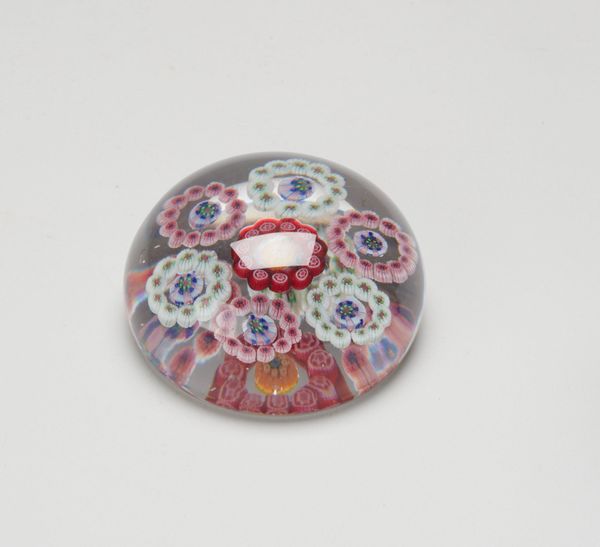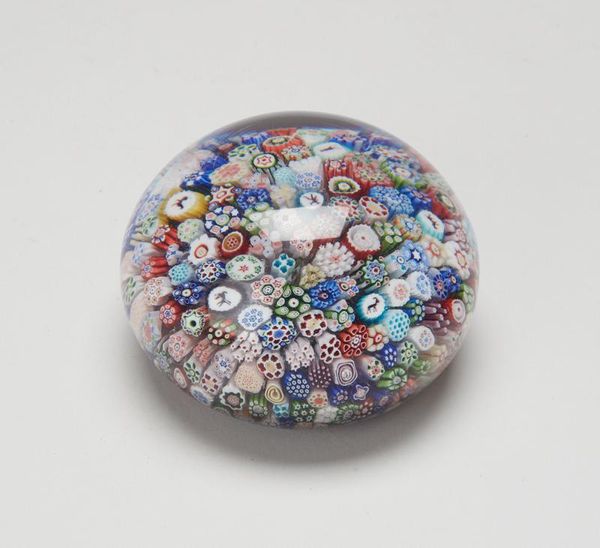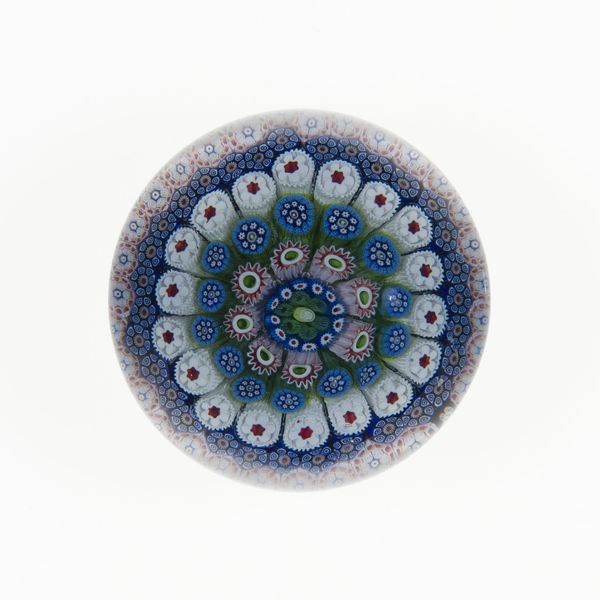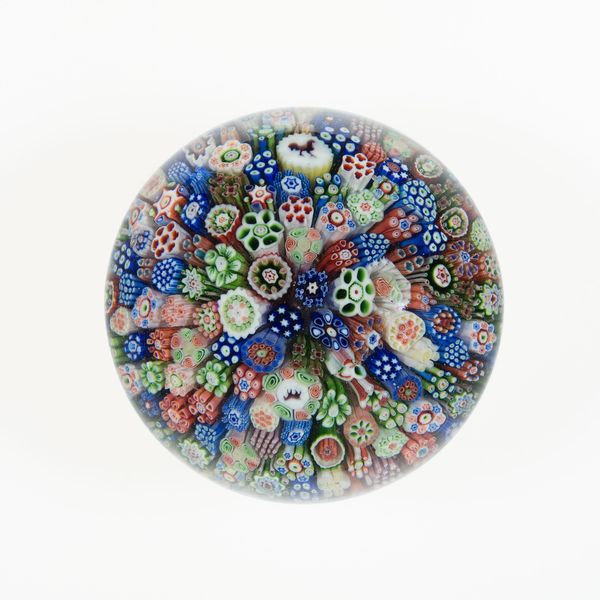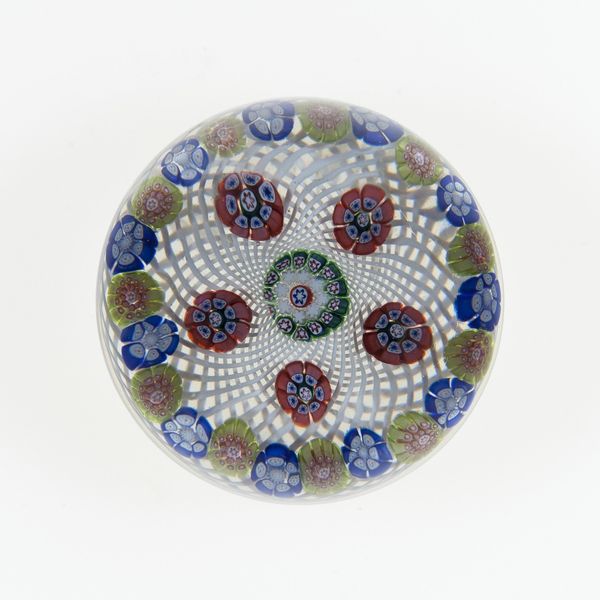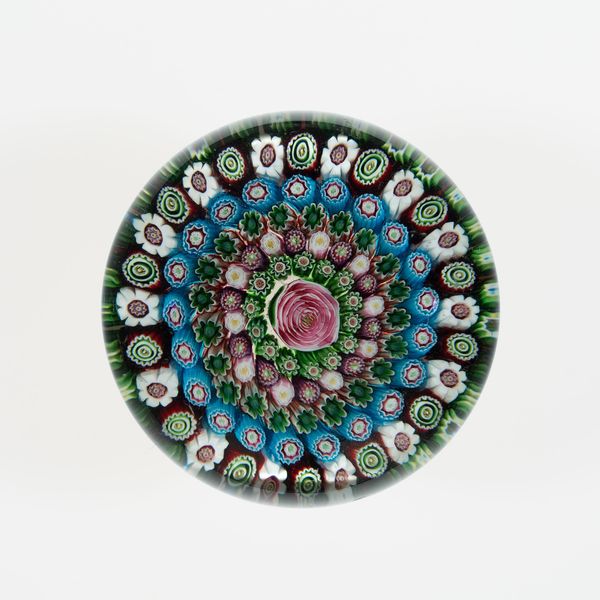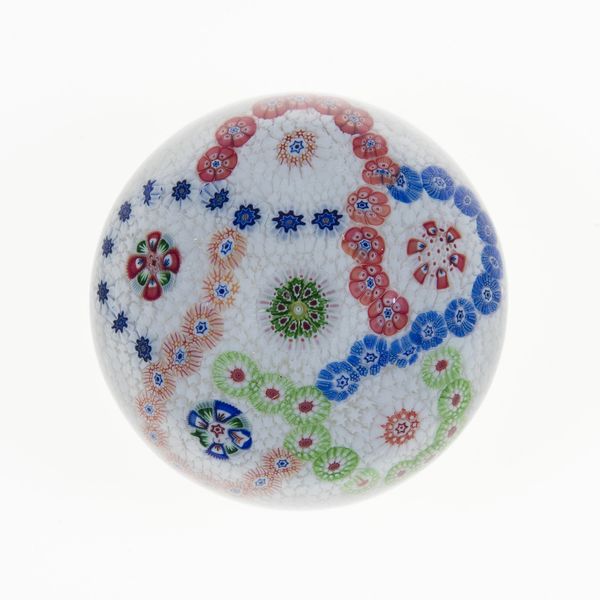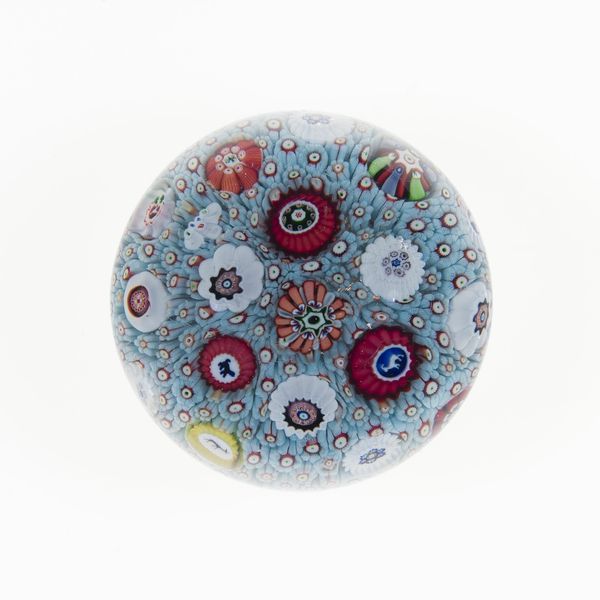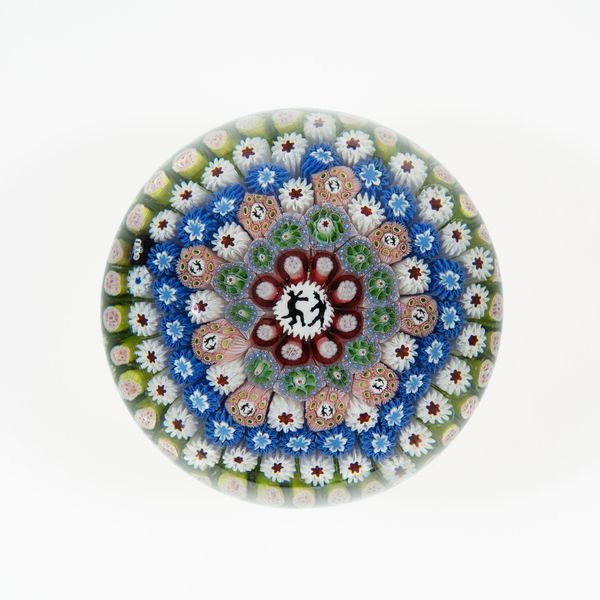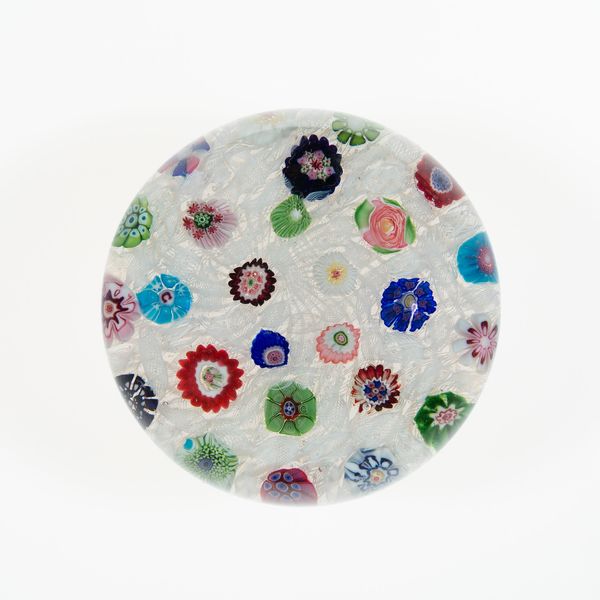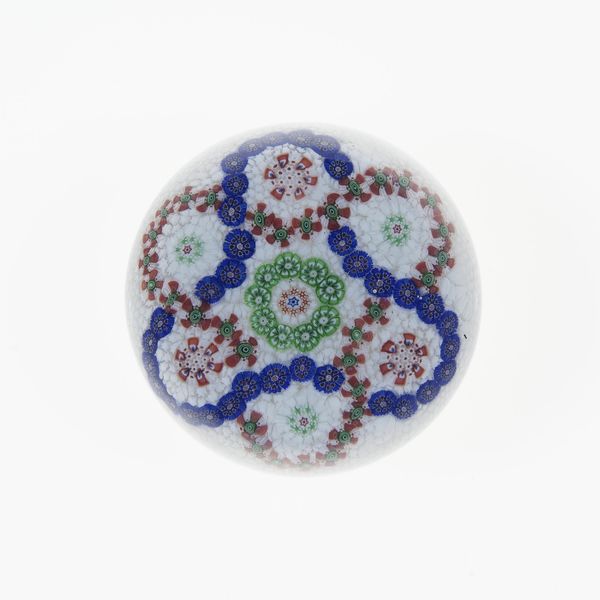
glass
#
glass
#
geometric
#
decorative-art
Dimensions: 1 3/4 x 2 5/8 x 2 5/8 in. (4.45 x 6.67 x 6.67 cm)
Copyright: Public Domain
Editor: Here we have a 19th-century glass paperweight made by the Saint Louis Glass Works. It’s like looking into a miniature, incredibly detailed world! What aspects of this piece stand out to you? Curator: The density of labor. Think about the individual components of this "world"—each little glass cane meticulously created and assembled. These paperweights were luxury items, showcasing not just artistic skill, but also a complex production process dependent on skilled glassworkers. Where does that labor fit in our understanding of decorative art versus "high" art? Editor: That's a perspective I hadn't considered. I just saw it as a pretty object. So, are you saying we should think about the people who made it, not just the final product? Curator: Precisely! It's crucial to acknowledge the economic and social contexts that enable such artistry. Consider the accessibility of these objects – who could afford them? Who was making them, and under what conditions? The contrast speaks volumes. What impact do you think that level of specialized labor and expense had on the final cultural value of the object? Editor: It definitely changes how I see it. It wasn't just art; it was a display of wealth and industrial capabilities. I wonder, did these glassworks influence other crafts or industries? Curator: Absolutely. Glassmaking techniques influenced scientific instrumentation, decorative architecture, and even medical tools. The lines between art, industry, and even medicine were far more blurred than we often acknowledge. Looking closely, we can start seeing the fingerprints, both literal and figurative, of labor on this seemingly pristine object. Editor: I now appreciate it much more by viewing it as a confluence of design, industrial processes, and social class. It’s more than just something pretty to put on a desk! Curator: Indeed. By focusing on the means of production, the material conditions, we unravel deeper cultural narratives embedded within everyday objects.
Comments
No comments
Be the first to comment and join the conversation on the ultimate creative platform.
